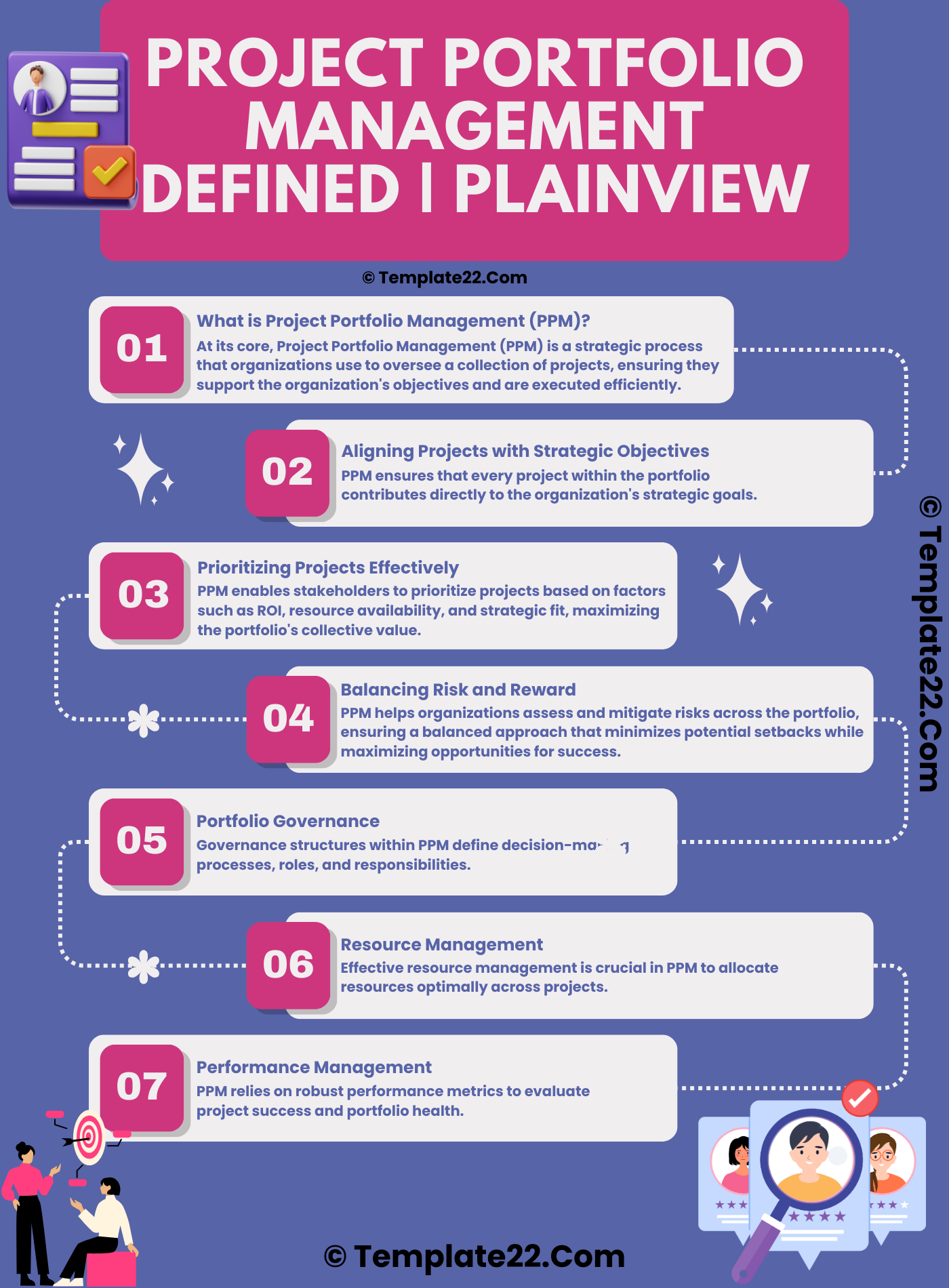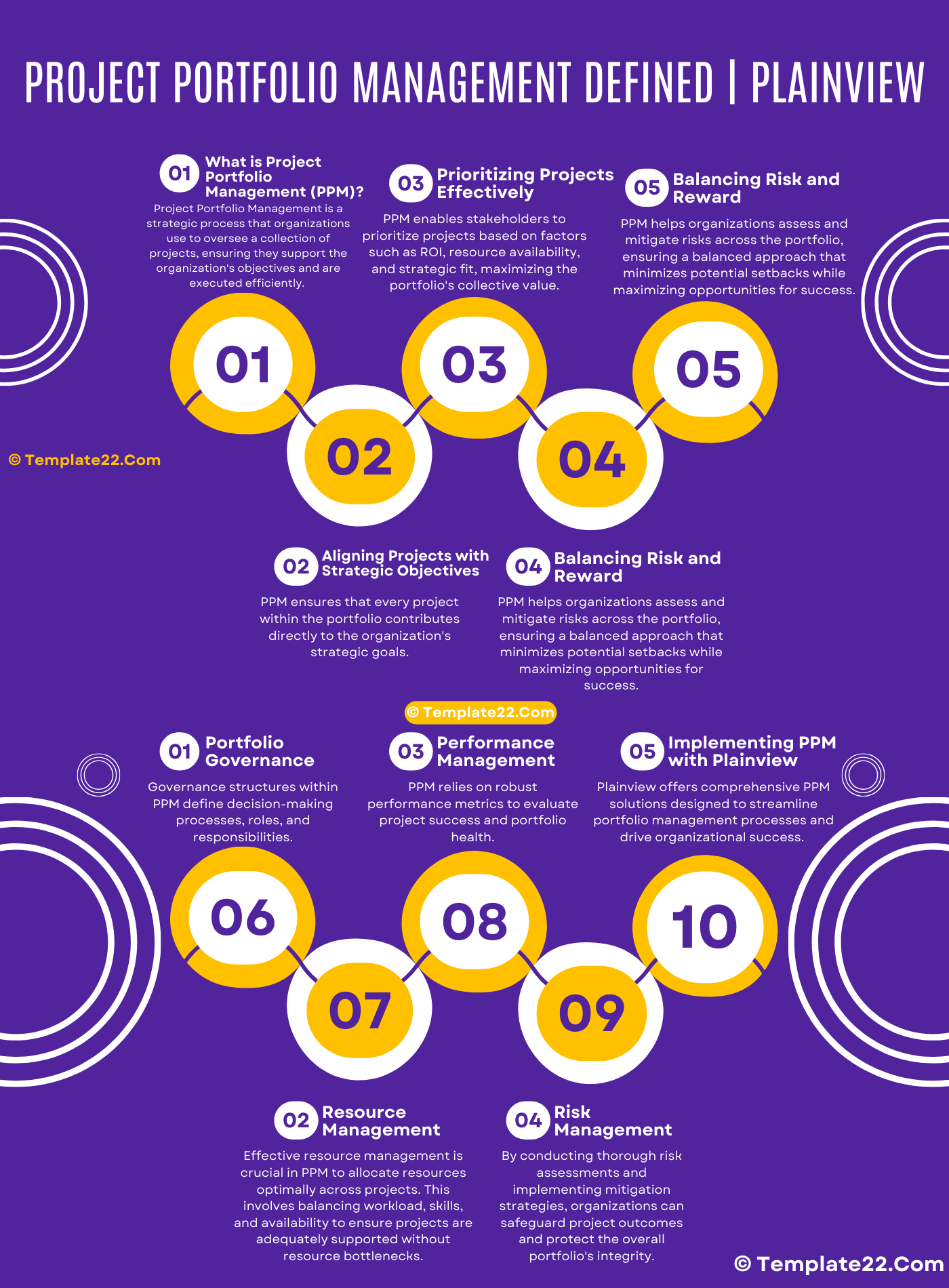 In today’s fast-paced business environment, managing multiple projects simultaneously while ensuring alignment with strategic goals can be a daunting task. This is where Project Portfolio Management (PPM) steps in, offering a structured approach to prioritize, manage, and execute projects effectively. Let’s delve into what PPM entails and how it can benefit organizations like yours.
In today’s fast-paced business environment, managing multiple projects simultaneously while ensuring alignment with strategic goals can be a daunting task. This is where Project Portfolio Management (PPM) steps in, offering a structured approach to prioritize, manage, and execute projects effectively. Let’s delve into what PPM entails and how it can benefit organizations like yours.
What is Project Portfolio Management (PPM)?
At its core, Project Portfolio Management (PPM) is a strategic process that organizations use to oversee a collection of projects, ensuring they support the organization’s objectives and are executed efficiently. Unlike project management, which focuses on individual projects, PPM takes a holistic view, considering the entire portfolio’s impact on business outcomes.
CLICK HERE TO DOWNLOAD 300+ PROJECT MANAGEMENT TEMPLATES & DOCUMENTS IN EXCEL
Why is PPM Essential for Organizations?
Aligning Projects with Strategic Objectives
PPM ensures that every project within the portfolio contributes directly to the organization’s strategic goals. By aligning projects with overarching objectives, businesses can optimize resource allocation and enhance overall performance.
Prioritizing Projects Effectively
In a competitive landscape where resources are limited, prioritization is key. PPM enables stakeholders to prioritize projects based on factors such as ROI, resource availability, and strategic fit, maximizing the portfolio’s collective value.
Balancing Risk and Reward
Every project carries inherent risks. PPM helps organizations assess and mitigate risks across the portfolio, ensuring a balanced approach that minimizes potential setbacks while maximizing opportunities for success.
The Key Components of PPM
1. Portfolio Governance
Governance structures within PPM define decision-making processes, roles, and responsibilities. This ensures that projects align with the organization’s governance framework and strategic direction.
CLICK HERE TO DOWNLOAD 300+ PROJECT MANAGEMENT TEMPLATES & DOCUMENTS IN EXCEL
2. Resource Management
Effective resource management is crucial in PPM to allocate resources optimally across projects. This involves balancing workload, skills, and availability to ensure projects are adequately supported without resource bottlenecks.
3. Performance Management
PPM relies on robust performance metrics to evaluate project success and portfolio health. Key performance indicators (KPIs) provide insights into project progress, allowing stakeholders to make informed decisions and course corrections as needed.
4. Risk Management
Identifying and mitigating risks is integral to PPM. By conducting thorough risk assessments and implementing mitigation strategies, organizations can safeguard project outcomes and protect the overall portfolio’s integrity.
Implementing PPM with Planview
Planview offers comprehensive PPM solutions designed to streamline portfolio management processes and drive organizational success. With features like intuitive dashboards, real-time analytics, and customizable workflows, Planview empowers teams to:
- Centralize Portfolio Data: Aggregate project information in a single, accessible platform for enhanced visibility and control.
- Optimize Resource Allocation: Allocate resources efficiently based on workload, skills, and project priorities to maximize productivity.
- Track Performance: Monitor project and portfolio performance against established KPIs to ensure alignment with strategic objectives.
The Benefits of Adopting PPM
1. Improved Decision-Making
PPM provides stakeholders with data-driven insights that facilitate informed decision-making. By evaluating projects within the context of the entire portfolio, organizations can prioritize initiatives that deliver the greatest value.
2. Enhanced Resource Utilization
Efficient resource allocation minimizes bottlenecks and optimizes resource utilization across projects. This leads to improved productivity and reduced operational costs.
3. Strategic Alignment
By aligning projects with strategic objectives, PPM ensures that every initiative contributes to long-term organizational goals. This alignment fosters agility and resilience in response to changing market conditions.
Conclusion
In conclusion, Project Portfolio Management (PPM) serves as a strategic framework for organizations to effectively manage and prioritize projects in alignment with business objectives. By implementing PPM practices, businesses can achieve greater visibility, optimize resource utilization, and drive sustainable growth. With Planview’s advanced PPM solutions, organizations can navigate complexity with confidence, turning challenges into opportunities for success.
Embrace PPM today and transform your project portfolio into a catalyst for innovation and strategic advantage.
